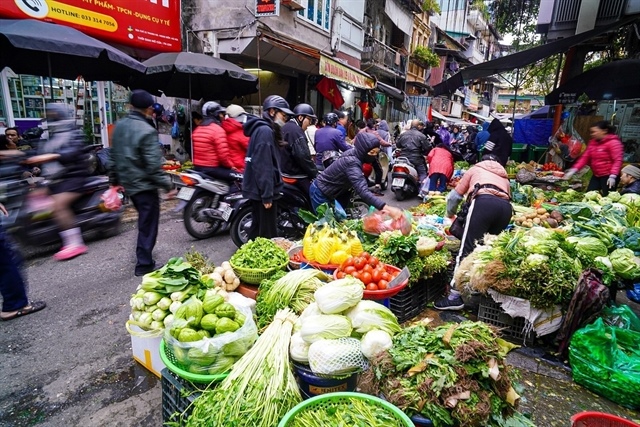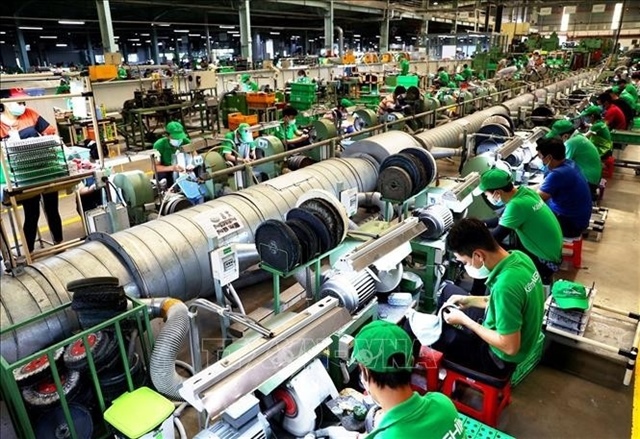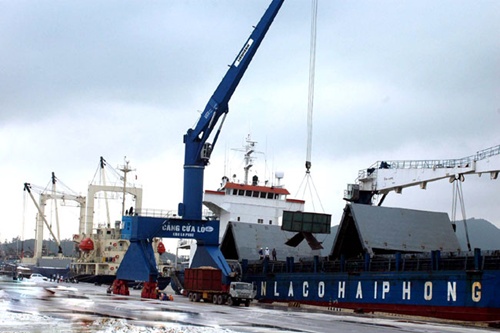A completed airfreight logistics chain is necessary for Viet Nam to develop
A completed airfreight logistics chain is necessary for Viet Nam to develop
Despite recent boom of airfreight, Viet Nam hasnt been able to set up the completed logistics chain to take advantage the boom, delegates heard at the 2nd International Conference and Exhibition for Airfreight Logistics Viet Nam2015, which opened yesterday in HCM City.
"Viet Nam is considered as the third country in the world, which have fastest growth of airfreight," Vu Huy Cuong, deputy general director of Viet Nam Civil Aviation Authority opened the conference.
"However, our achievements were separated efforts of different sectors, there were no link and not a completed logistics chain with weakness in human resource and technology application," he added.
At present, 50 airlines from 25 nations and territories have been operating in Viet Namand during 2001- 2014, airfreight in Viet Nam has reached an annual growth of 14.5 per cent for passenger and 15.3 per cent for cargo.
"Developing a completed logistics chain is a must work and the conference aims to learn all airfreight experience around the world and to apply into Vietnamese reality," said Do Xuaan Quang, chairman of the Viet Nam Airfreight Logistics Association.
He pointed out that slow down GDP growth, global economic crisis, fuel price fluctuation along with the industrys seasonality: over-capacity vs under capacity; local airlines growing rapidly but still in small scale compared with international airlines; local airlines current focus: passenger fleets and shortage of highly skilled, trained human resource in aviation industry all are challenges for Vietnamese airfreight logistics
Twenty international speakers shared their operation experience for 300 logistics enterprises at four topics: new trends and challenges in Pacific Asia airfreight; vision – mission of connecting airfreight logistics; promoting co-operation and development of airfreight logistics; and developing human resource in airfreight logistics in order to help Viet Nam overcoming these above challenges.
According to Clement Blanc, Managing director of DGF Viet Nam, international trend is usage of belly-hold.
"There was a mentality shift: from 1990s – early 2000: bigger is better but late 2000s: carry less more often," he said.
Around 50 per cent of operating a freighter is fuel cost and economics based on cargo only. In return, cargo on belly-hold is sunk-cost/complimentary, economics based on passenger.
He also pointed out that the industry is moving into less warehousing/inventory; majority freighters are huge ad belly-hold has frequency and capacity to the right places.
"Viet Nam has developed from GDP of US$33.6 in 2000 to $171.4 in 2014 but airfreight capacity has not grown at the same pace to support the growth," he added.
"Insufficient airfreight capacity to meet the requirements of customers unlike other locations thus we "lose" cargo to neighbouring countries," he warned.
Tom Hoang, regional director, Cargo Marketing, Boeing Commercial Airplanes showed the fact that in 2013, HCM City and Ha Noi were listed as top 20 and 22 cargo airports in Asia with growth of 10 per cent and 23.3 per cent higher than 2012 at 376,000 tonnes and 348,500 tonnes respectively
"Viet Nam air cargo market is forecasted to grow 11.5 per cent per year over the next decade," he said.
He warned that to remain the growth, Viet Nam must meet airplane payload/range requirements for the market demand; meet current and future noise/emissions standards, provides lowest direction operation cost; good match between volume and weight capacity; converted freighters are most popular in smaller freighter market due to low utilization rate; and new production freighter are more popular in large freighter market due to high utilization rate.



















